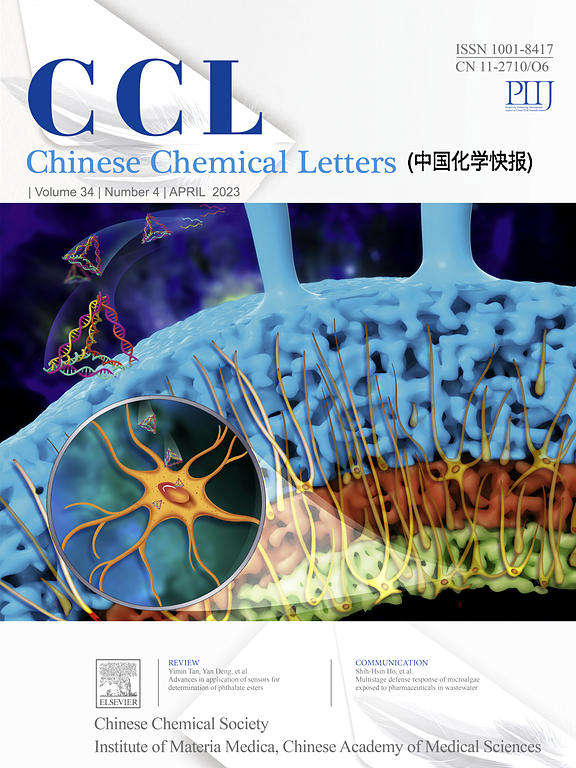稳定双电极界面通过交联明胶非织造隔膜耐用锂金属电池
IF 8.9
1区 化学
Q1 CHEMISTRY, MULTIDISCIPLINARY
引用次数: 0
摘要
锂阳极枝晶生长不可控和过渡金属氧化物阴极活性物质溶解严重阻碍了锂金属电池的发展。解决这些问题的有效策略是优化分离器以调节离子传输并捕获丢失的活性成分。本文通过静电纺丝和原位气相交联工艺制备了一种交联明胶非织造布(CGN)分离器,以操纵双电极界面。得益于明胶的特性组成和静电纺非织造布的多孔结构,CGN隔膜具有优异的界面润湿性和低界面阻力,具有0.70的高Li+转移数和3.75 mS/cm的高离子电导率。正如预期的那样,对称锂/锂电池在0.5 mA/cm2下表现出1900 h的稳定循环行为,过电位低至20 mV。优化后的LiMn2O4/Li电池在0.3℃下循环100次后可获得103 mAh/g的高可逆容量和83.7 %的高容量保持率,这可有效归功于CGN分离器与Mn离子之间的强相互作用,防止了活性Mn组分的损失。该研究表明了蛋白基电纺丝膜在高性能锂金属电池中的应用潜力。本文章由计算机程序翻译,如有差异,请以英文原文为准。

Stabilizing the dual electrode interface via a crosslinked gelatin nonwoven separator for durable lithium metal batteries
The uncontrollable dendrite growth of lithium anode and active material dissolution of transition metal oxides cathodes severely hinder the development of lithium metal batteries. An effective strategy to address these issues is optimizing the separator to regulate ion transport and trap the lost active component. Herein, a crosslinked gelatin nonwoven (CGN) separator is elaborately fabricated through electrospinning and in-situ vapor phase crosslinking process to manipulate the dual electrode interface. Benefitting from the characteristic composition of gelatin, and porous structure of electrospun nonwoven, the CGN separator exhibits excellent interface wettability and low interface resistance, featuring a high Li+ transference number of 0.70 and high ionic conductivity of 3.75 mS/cm. As expected, the symmetrical Li/Li cells present stable cycling behavior for 1900 h at 0.5 mA/cm2 with low overpotential of 20 mV. The optimized LiMn2O4/Li cells deliver high reversible capacity of 103 mAh/g as well as high capacity-retention ratio of 83.7 % after 100 cycles at 0.3 C, which can be effectively attributed to the strong interaction between CGN separator and Mn ions to prevent the loss of active Mn component. This study indicates the application potential of protein-based electrospun membrane for high-performance lithium metal batteries.
求助全文
通过发布文献求助,成功后即可免费获取论文全文。
去求助
来源期刊

Chinese Chemical Letters
化学-化学综合
CiteScore
14.10
自引率
15.40%
发文量
8969
审稿时长
1.6 months
期刊介绍:
Chinese Chemical Letters (CCL) (ISSN 1001-8417) was founded in July 1990. The journal publishes preliminary accounts in the whole field of chemistry, including inorganic chemistry, organic chemistry, analytical chemistry, physical chemistry, polymer chemistry, applied chemistry, etc.Chinese Chemical Letters does not accept articles previously published or scheduled to be published. To verify originality, your article may be checked by the originality detection service CrossCheck.
 求助内容:
求助内容: 应助结果提醒方式:
应助结果提醒方式:


